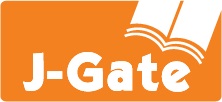Author ORCID Identifier
Rajesh Kumar Sinha
Abstract
Background: Severe Acute Malnutrition (SAM) among children remains unacceptably high in Jharkhand. A Community-based Management of SAM (CMAM) intervention, which provides full continuum of care provided by the CMAM intervention, from inpatient treatment for medically complicated SAM cases to outpatient treatment for uncomplicated SAM cases, was conducted to treat children with SAM by the government appointed community health workers.
Methods: Costs of treating a case of uncomplicated SAM in the CMAM intervention were estimated from the provider’s and societal perspectives, in the research setting and from the provider’s perspective in the government setting. Costs of the In-patient/Facility-based Management of SAM (FSAM) intervention were estimated from the provider’s perspective alone. Costs were estimated at 2023 prices. Outcomes were also collected for both FSAM and CMAM components. The cost-effectiveness ratios (CER) of CMAM and FSAM interventions were calculated, by dividing the costs with number of cases treated, and compared.
Results: The CER of the FSAM intervention was Rs. 17,890 (US$ 217) per child treated. The provider’s and societal CERs of the CMAM intervention in a research setting were Rs. 15,289 (US$ 185) and Rs. 17,950 (US$ 217) per child treated, respectively while the provider’s costs in the government setting was Rs. 7,137 (US$ 86) per child treated. The robustness of the findings to assumptions was tested using one-way sensitivity analyses.
Conclusion: The CMAM intervention is more cost effective than the FSAM intervention. CMAM can effectively complement FSAM in India to address the high burden of SAM in the country.
Keywords: Cost-effectiveness, SAM, CMAM, FSAM
Keywords
Cost-effectiveness, SAM, CMAM, FSAM
Recommended Citation
Sinha, Rajesh Kumar
(2024)
"Cost Effectiveness Analysis of The Community and Hospital Based Management of Acute Malnutrition: A Case From Jharkhand, India,"
Management Dynamics: Vol. 24:
No.
1, Article 7:
DOI: https://doi.org/10.57198/2583-4932.1335
Available at:
https://managementdynamics.researchcommons.org/journal/vol24/iss1/7





